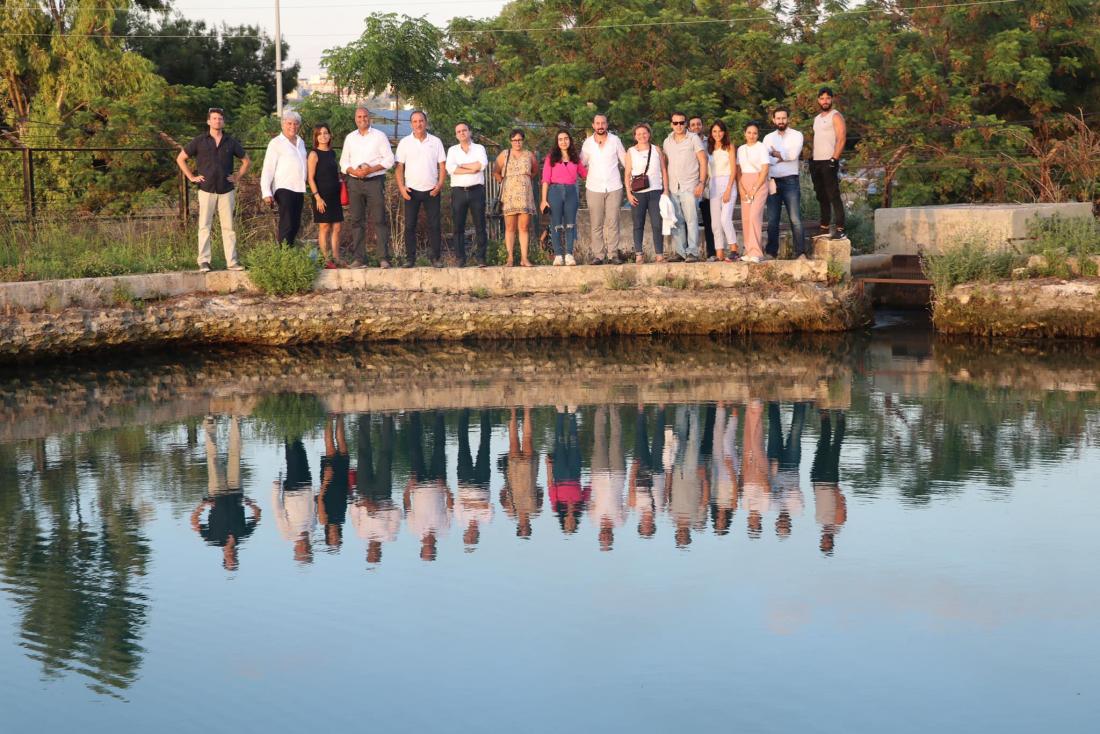A new governance model puts its roots in Lebanon: ENSERES gathers local stakeholders and partners in Tyre to discuss the positive outcomes of a sustainable approach to economic development.

Meeting, sharing, establishing new relationships and consolidating old ones, refining concepts and methods, applying them in new marine-coastal spaces, and… meeting again. The ENSERES project team has created a practice and a tradition that can be replicated on the Mediterranean coasts, a system of dialogue and activities that in recent days has returned to visit the city of Tyre.
In the splendid southern Lebanese city, the local results of the project were presented on 18 September 2023. For over two years ENSERES has concentrated its efforts on improving the response of the territory, understood as a unity of community and ecosystem, to the challenges posed by our time. Tyre and its Nature Reserve represent one of the few uncontaminated stretches of the Lebanese coast. The beaches, the sea, the ponds, the animal and plant species, the precious archaeological sites, face the negative consequences of excessive anthropic pressure and climate change, which risk eroding the immense ecosystem and cultural heritage of a place that is being a protagonist of Mediterranean history since the Phoenician era.
“The ENSERES national capitalization event for Lebanon brought together stakeholders from the Ministry of Environment and Agriculture, Marine Protected Areas, municipalities, the private sector and civil society organizations who shared their ideas, plans and strategies to address current and future challenges of coastal management and conservation in Lebanon”, explains Christoph Schröder, ETC-UMA coordinator of the ENSERES project.
According to Schröder, a geographer from the University of Malaga, the Tyre meeting demonstrated that ENSERES has succeeded in providing useful tools and training courses to build a more sustainable future. The synergy between coastal cities and local stakeholders constitutes a model that must be promoted and strengthened.
Piera Pala, environmental lawyer of the MEDSEA Foundation and coordinator of the exchange visit that took place last year in Oristano, Sardinia, is of the same opinion: "The exchange of knowledge and the evaluation of the transferability of governance and management tools of natural resources was the most interesting and constructive part of the capitalization event. The discussion with representatives of local and national political institutions and with technical experts from the academic world, allowed the introduction of the resource management tools into the Lebanese context as the natural integrated governance model tested in the Gulf of Oristano”.
The subgrants granted by the ENSERES project were used by local NGOs to create a virtuous circle between environment, culture and economy. A new concept of sustainable development in the tourism sector has reached citizens and institutions, taking shape, in particular, around the ancient springs of Ras el-Ein, where nature and archaeology have become the object of careful study by public and private entities interested in preserving and relaunching the ecosystem value of the site.
“The integrated management model developed by ENSERES is perfectly suited to the case of Tyre and Lebanon, contexts that require great environmental care and at the same time an approach to development that manages to overcome the serious economic stalemate”, says Ali Badreddine, marine biologist and director of the Tyre Nature Reserve. “The meeting on September 18th was a success”, Badreddine continues. “The municipal authorities, the Ministry of the Environment, the representatives of coastal cities such as Sidon and Tripoli: everyone had the opportunity to express their appreciation for the work carried out, the fight against sea pollution and the parallel promotion of the area. Now we just want the path not to be interrupted, we hope that Tyre and Lebanon can continue to lay the foundations for a sustainable future".









